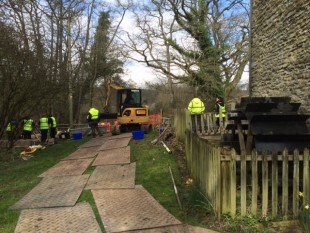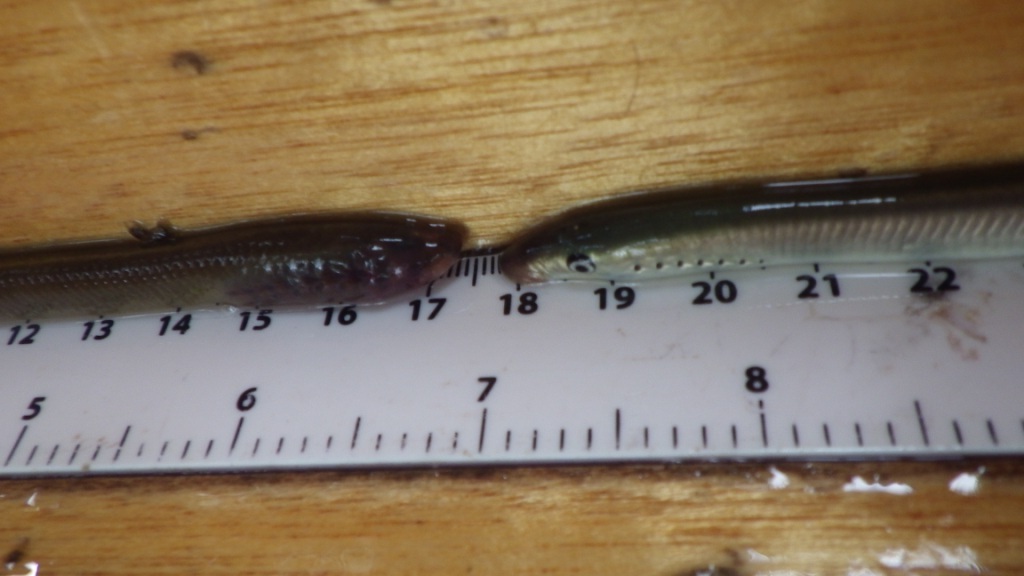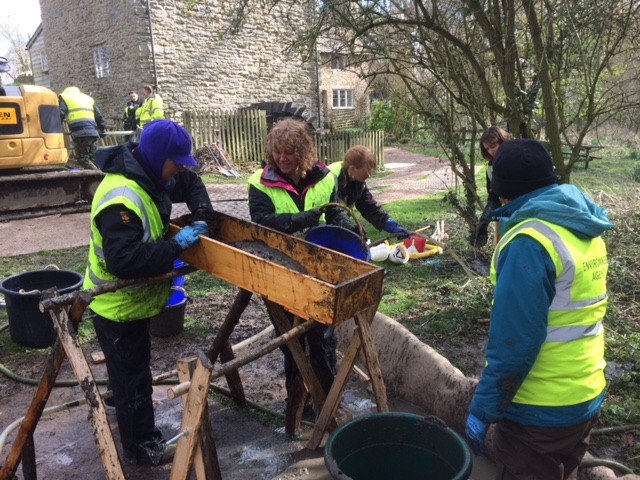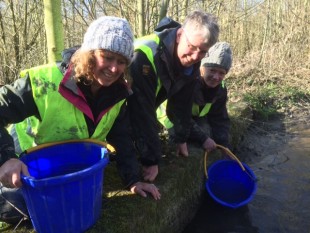I’m Brecht Morris, Fisheries Technical Officer for the Environment Agency. We have recently finished working with Natural England and English Heritage on a really interesting project in Herefordshire.

Mortimers Cross Water Mill is an 18th century working mill on the River Lugg. English Heritage needed to conduct some urgent maintenance work to renovate and protect this important historic building so they applied for consent to drain an area in front of the water wheel and remove the silt that has built up over the years.
The River Lugg is both a Special Area of Conservation (SAC) and a Site of Special Scientific Interest (SSSI) protected by international and national designations. We worked alongside English Heritage and Natural England to find the best solution to complete the work whilst protecting the rare migratory fish and other species that live in the river. Environment Agency staff identified that one of those significant fish species that would be present within the working area would be lampreys. These illusive fish are extremely selective with their spawning sites and will only nest where the water quality is good. So their presence in the River Lugg is great news for water quality.
Unusual life cycle
There are three species of lamprey in the UK. These are brook lamprey, river lamprey and sea lamprey. These are all Habitats Directive species; river and sea lamprey are UK Biodiversity Action Plan species. This means they are rare and need to be protected.

Lamprey species all spend the first few years of their life buried within the sediment as they feed on the silty and sandy parts of the riverbed. At this stage they look very different to adults, the young lampreys are called ammocoetes and they are particularly vulnerable to silt removal from rivers at all times of year. Later these individuals start to change and are called transformers. Once they’ve undergone this change they then go to live outside the silt.
The 'lamprey rescue team'

The team involved in the project was made up of Natural England staff, contractors working on behalf of English Heritage and staff from the Environment Agency fisheries team. The team used a range of techniques to sift through silt, recovering 53 lamprey including ammocoetes and transformers before the silt was removed from the site. They were released further downstream back into the same river the same day.

I think that this was a really successful example of partnership working to protect and raise awareness of some of our lesser known rare fish species. It was a great opportunity share information and learn alongside our colleagues in Natural England whilst getting stuck in to some physical dirty work to rescue a large number of lamprey.

11 comments
Comment by Ashley Harsent posted on
I have a video of brook lamprey spawning in a remote part of the little stour Kent i can send it to the environment agency? My email is - ashleyharsent@yahoo.com
Comment by kathrynbooth posted on
Hi, please send it to: enquiries@environment-agency.gov.uk and we can forward to our national team. Thank you in advance and for sharing - ^Eileen
Comment by Ken Robertson posted on
I have returned from a walk along the Annaty burn about one mile up stream from the village of Scone in Scotland. I spotted a number of Brook Lamprey that had congregated below a bridge over the burn. I had a similar experience yesterday but there were many more then than today!
Comment by eileenroffe posted on
Good morning - this would fall under SEPA - https://www.sepa.org.uk/ - they are the Scottish EA - best wishes - Eileen
Comment by dian posted on
can you explain why we have to protect lamprey as I read that they are parasite on fish, one pf them salmon? Thank you
Comment by eileenroffe posted on
Good morning - Listed on the International Union for Conservation of Nature (IUCN) Red list of Threatened Species - Eileen
Comment by Janet Stauffer posted on
Yes, good question. From what I have read of lampreys they are disgusting parasites feeding on fish in a horrific way. So why bring them back?
Comment by Luke Szwedziuk posted on
The sea and river lamprey are parasites of salmon and trout. They have a lifecycle similar to that of salmon, so they have co-evolved together, so they are essential part of the freshwater ecosystem. They were also overfished historically. However they are massive pests in North America to trout and salmon. The brook lamprey is not parasitic, feeds organic matter in the water. All three species have suffered massive habitat decline and need conservation efforts.
Comment by Tracey Hamston posted on
We have brook lamprey in a local stream that runs though town. Is there some guidance on when and how (or if) to clear vegetation without affecting.them. the stream is quite silty and rorippa grows profusely
Comment by Luke Szwedziuk posted on
In May I saw two lamprey's in the River Rother, East Sussex. I presume they were Brook Lampreys, because they looked like tiny eels on the rocks at the river bed. I spoke a local angler and he said he has being seeing them for years. Next year I am going to go with a GoPro to try and try and film them underwater.
Comment by tony paine posted on
as a very young boy i remember lampreys attaching to my legs when wading in the river medway between weirwood reservoir and kingscote. this was about 1953 or 1955. i dont know if they still inhabit this area